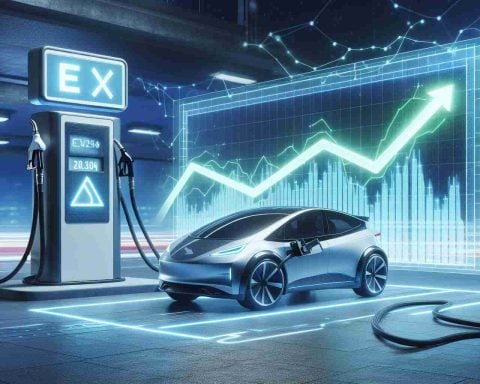- The increasing reliance on quantum and supercomputers raises concerns about energy consumption.
- Northeastern University researchers are pioneering sustainable computing practices.
- Devesh Tiwari emphasizes the importance of energy-efficient solutions in technology.
- Ph.D. student Yankai Jiang’s Ecolife method balances legacy and advanced hardware for lower carbon emissions.
- Ana Luisa Solórzano initiated an energy-saving incentive program at RIKEN, promoting responsible computing habits.
- The focus on sustainability in supercomputing demonstrates that achieving energy efficiency is within reach.
- The next generation of technologists is encouraged to innovate towards sustainable computing solutions.
As our world becomes increasingly reliant on quantum and high-performance supercomputers, a shadow looms over this powerful technology: energy consumption. But that narrative is shifting, thanks to visionary researchers at Northeastern University who are championing sustainability in computing.
Devesh Tiwari, a dynamic associate professor and director of the Goodwill Computing Lab, stresses the necessity of sustainable practices in the tech revolution. His research team is leading the charge, creating innovative solutions for energy efficiency that are making waves at major conferences, like the International Conference for High-Performance Computing, Networking, Storage, and Analysis. They’ve achieved remarkable recognition, with several papers selected from a competitive field.
One standout innovation comes from Ph.D. student Yankai Jiang, who developed a method called Ecolife to cut the carbon footprint of serverless computing. This ingenious approach blends legacy and cutting-edge hardware, maximizing efficiency while minimizing emissions. By rotating between older, carbon-efficient machines and high-performance servers, Jiang’s strategy embodies a compelling balance of innovation and sustainability.
Additionally, Ana Luisa Solórzano’s incentive-based energy program at Japan’s RIKEN supercomputer cleverly motivates users to embrace energy-saving practices. This initiative not only incentivized energy reduction, saving significant power, but also engaged users in responsible computing habits.
These breakthroughs illustrate an essential truth: sustainability in supercomputing isn’t just possible, it’s achievable. As Tiwari encourages, the next generation of technologists must think creatively to transform the future—one energy-efficient solution at a time. Are you ready to support sustainable computing?
Revolutionizing Computing: The Path to Sustainability in Quantum and Supercomputing
As the reliance on quantum and supercomputers grows, the emphasis on sustainability in technology has never been more critical. Researchers like Devesh Tiwari and his team at Northeastern University are leading innovative efforts to address energy consumption challenges in high-performance computing (HPC) while promoting sustainable practices. Here’s an overview of new and relevant insights into current trends, innovations, and practices for sustainable computing.
Innovations in Sustainable Computing
1. Ecolife Method:
– Developed by Yankai Jiang, Ecolife combines older, carbon-efficient hardware with state-of-the-art servers to optimize energy use in serverless environments. By alternating between various generations of technology, Jiang’s method effectively reduces the carbon footprint of computing without sacrificing performance.
2. Incentive-Based Energy Programs:
– Ana Luisa Solórzano has implemented a successful energy-saving initiative at Japan’s RIKEN supercomputer that promotes user engagement with sustainability. This program employs incentives to reduce energy consumption and instill responsible computing habits, illustrating how user behavior can influence energy efficiency.
3. Energy Efficiency Algorithms:
– Recent advances in machine learning algorithms have made it possible to predict and minimize energy usage in HPC environments by optimizing workload distribution and reducing idle times.
Pros and Cons of Sustainable Computing in High-Performance Technologies
– Pros:
– Reduces overall carbon emissions and enhances corporate sustainability profiles.
– Encourages innovation and attracts funding from eco-conscious investors.
– Improves user engagement and fosters a culture of responsibility around energy consumption.
– Cons:
– Potential upfront costs for implementing new technologies.
– Possible trade-offs between performance and energy efficiency depending on workloads.
– Resistance to change from users accustomed to traditional computing practices.
Predictions for the Future of Sustainable Supercomputing
Experts predict that by 2030, the shift towards sustainable computing will result in energy-efficient supercomputers capable of operating on renewable energy sources. This trend may lead to the widespread adoption of practices like energy harvesting and enhanced cooling systems that utilize less energy.
Frequently Asked Questions
1. What are the main barriers to adopting sustainable practices in high-performance computing?
– The primary barriers include high initial costs, lack of awareness about the benefits, and resistance to change from established practices in the tech industry.
2. How can organizations measure the environmental impact of their computing resources?
– Organizations can utilize software tools that track energy consumption and carbon emissions, allowing them to assess and report on their environmental impact.
3. What role do government and policies play in promoting sustainability in computing?
– Government regulations and policies can incentivize companies to adopt green technologies through grants, tax breaks, and funding for research, significantly driving the shift toward sustainable practices in the sector.
For more information on sustainable computing initiatives, visit northeastern.edu.












